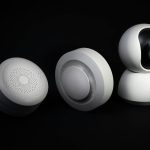When setting up your home office in a humid environment, you might not realize how crucial your mousepad choice is. Different materials can significantly impact both comfort and functionality. From moisture-resistant options to those that promote sustainability, the right mousepad can enhance your workspace. Let's explore which materials stand out and why they matter for your daily productivity.
Table of Contents
Key Takeaways
- Synthetic fabrics and neoprene resist moisture, enhance mouse tracking, and are easy to clean, making them ideal for humid environments.
- Rubber backing provides grip stability and moisture resistance, ensuring durability and reliability in high humidity.
- Hard plastic surfaces are non-porous, simplifying maintenance and preventing the absorption of moisture and dirt.
- Glass mousepads offer a sleek, durable surface that resists moisture and is easy to clean, perfect for humid conditions.
- Bamboo and organic cotton mousepads are eco-friendly options that absorb moisture, provide comfort, and require minimal maintenance in humid environments.
Synthetic Fabrics: The Durable Choice
When you're navigating the challenges of a humid environment, synthetic fabrics emerge as a durable choice for mousepads. These materials resist moisture better than traditional fabrics, making them less likely to absorb humidity and become soggy.
You'll find that synthetic mousepads offer excellent durability; they withstand wear and tear from daily use without losing their functionality. Plus, they're easy to clean—just a quick wipe down with a damp cloth can keep them looking fresh.
The smooth surface enhances your mouse's tracking precision, which is crucial for productivity. With synthetic fabrics, you won't have to worry about your mousepad deteriorating in a humid setting, ensuring a consistent, reliable experience every time you sit down to work.
Rubber Backing: Stability in Moisture
When you're working in a humid environment, rubber backing on your mousepad can make a real difference.
Its moisture resistance properties help maintain grip stability, ensuring your mouse responds accurately.
Plus, rubber backing enhances the longevity of your mousepad, so you won't have to replace it as often.
Moisture Resistance Properties
Although humidity can wreak havoc on many materials, rubber backing in mousepads offers impressive stability in moist environments. This moisture resistance is crucial for maintaining your mousepad's integrity and performance.
Here's a quick comparison of rubber backing and other materials:
| Material | Moisture Resistance | Durability |
|---|---|---|
| Rubber Backing | High | Excellent |
| Fabric | Moderate | Good |
| Plastic | Low | Fair |
| Foam | Low | Poor |
With rubber backing, you don't have to worry about warping or deterioration due to humidity. It ensures your mousepad remains functional and reliable, allowing you to focus on your work without distraction.
Enhanced Grip Stability
The rubber backing on a mousepad provides exceptional grip stability, especially in humid conditions.
When you're working in a damp environment, you need a mousepad that won't slide around or shift unexpectedly. The textured surface of rubber creates friction against your desk, ensuring that your mousepad stays firmly in place.
This stability not only enhances your precision but also prevents frustrating interruptions during intense work sessions. Plus, you won't have to constantly readjust your setup, allowing you to maintain focus.
Whether you're gaming or handling important tasks, a mousepad with rubber backing offers the reliable grip you need. Invest in this material to ensure a smooth and consistent experience, even when humidity levels rise.
Longevity in Humidity
While humidity can wreak havoc on many surfaces, a mousepad with rubber backing stands up well to moisture, ensuring longevity and consistent performance. This material not only resists warping but also maintains its grip, allowing you to focus on your tasks without distractions.
Here's a quick comparison of mousepad materials in humid environments:
| Material | Longevity in Humidity |
|---|---|
| Rubber Backing | Excellent |
| Cloth | Moderate |
| Plastic | Low |
| Foam | Moderate |
| Metal | High |
Hard Plastic Surfaces: Easy to Clean and Maintain
When you're navigating a humid environment, choosing a mousepad made from hard plastic can significantly simplify your cleaning routine.
These surfaces are non-porous, which means they won't absorb moisture or dirt like fabric options might. A quick wipe with a damp cloth or a gentle cleaning solution is often all you need to keep it looking fresh.
Plus, hard plastic doesn't harbor allergens or bacteria, making it a healthy choice for your workspace. You won't have to worry about mold or mildew developing, a common concern in humid climates.
With their durability and resistance to wear, hard plastic mousepads provide a hassle-free solution that allows you to focus on your tasks without the distraction of constant maintenance.
Neoprene: Flexibility and Water Resistance
When you're dealing with humid environments, neoprene offers both flexibility and impressive water resistance.
This durable material stands up to moisture, ensuring your mousepad maintains its shape and function.
Plus, cleaning it's a breeze, making neoprene a practical choice for your workspace.
Durable Material Properties
Neoprene stands out as an excellent choice for mousepads in humid environments due to its impressive flexibility and water resistance. This material can withstand moisture without losing its shape or function, making it perfect for your home office. Plus, neoprene's durability ensures that your mousepad lasts longer than many alternatives, saving you money over time.
| Property | Benefit | Importance |
|---|---|---|
| Flexibility | Adapts to different surfaces | Enhances comfort |
| Water Resistance | Repels moisture, preventing damage | Maintains performance |
| Durability | Resists wear and tear over time | Cost-effective solution |
| Lightweight | Easy to transport and reposition | Convenient for users |
| Grip | Stays in place during use | Improves accuracy |
With these properties, neoprene mousepads are a smart investment.
Easy Maintenance Solutions
Given its water-resistant properties, neoprene mousepads are incredibly easy to maintain in humid environments. You won't have to worry about spills or sweat damaging your mousepad, as water simply beads up and rolls off.
When it comes to cleaning, a damp cloth and mild soap are usually all you need. Just wipe it down, and you're good to go.
Unlike fabric mousepads that can absorb moisture and odors, neoprene stays fresh and clean with minimal effort.
Plus, its flexibility means you can roll it up for easy storage or transport without worrying about damage.
With neoprene, you get a durable, low-maintenance solution that keeps your workspace tidy, so you can focus on your tasks without distractions.
Glass Mousepads: A Sleek, Non-Porous Option
If you're looking for a stylish and practical solution for your workspace, glass mousepads offer a sleek, non-porous alternative.
These pads resist moisture, making them ideal for humid environments. Unlike fabric or foam, glass won't absorb spills or humidity, ensuring a consistent surface for your mouse movements. You'll find that the smooth surface allows for quick gliding, enhancing your productivity during long work sessions.
Moreover, glass mousepads come in various designs, so you can easily match them to your aesthetic. They're easy to clean—just a quick wipe with a damp cloth will do.
Plus, their durability means you won't have to replace them often, making them a smart investment for your home office.
Eco-Friendly Materials: Sustainability in Humid Conditions
While glass mousepads provide a sleek, moisture-resistant option, eco-friendly materials are gaining popularity for those who want to prioritize sustainability in humid environments.
These materials not only minimize environmental impact but also perform well against humidity.
Consider these eco-friendly options for your mousepad:
- Cork: Naturally moisture-resistant and biodegradable, cork is a fantastic choice.
- Recycled Rubber: Durable and water-resistant, it utilizes materials that would otherwise go to waste.
- Bamboo: This fast-growing plant offers a sturdy surface while being eco-conscious.
- Organic Cotton: Soft and breathable, it absorbs moisture effectively and is compostable.
Choosing these materials means you can work comfortably while supporting a healthier planet!
Frequently Asked Questions
How Do Mousepads Affect Mouse Sensitivity and Tracking Accuracy?
Mousepads significantly influence your mouse's sensitivity and tracking accuracy. A smooth surface enhances precision, while texture can create drag. Choosing the right mousepad helps you achieve optimal performance, ensuring your movements translate accurately on-screen.
Can I Wash My Mousepad in a Washing Machine?
You can wash some mousepads in a washing machine, but check the manufacturer's instructions first. If they're made of fabric or rubber, gentle cycles with cold water usually work best to protect the material.
What Size Mousepad Is Best for My Workspace?
To choose the best mousepad size for your workspace, consider your desk dimensions and how much space you need for movement. A larger pad offers more freedom, while a smaller one saves space.
Do Mousepads Impact Wrist Health and Comfort?
Yes, mousepads do impact your wrist health and comfort. A supportive mousepad can reduce strain, promote proper alignment, and enhance your overall gaming or work experience. Choosing the right one can make a significant difference.
How Often Should I Replace My Mousepad in Humid Conditions?
You should replace your mousepad every 6 to 12 months in humid conditions. Regularly check for wear or moisture damage, as these factors can affect both performance and hygiene, ensuring your workspace remains comfortable and efficient.




